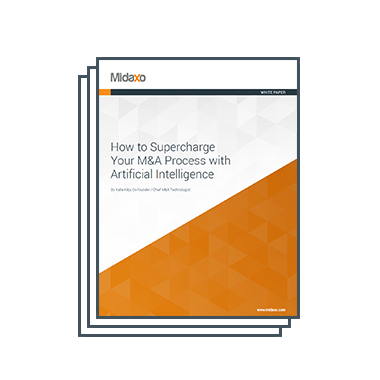Introduction:
“Saying ‘I don’t have time for CRM,’ is like saying, ‘I don’t have time to look at my GPS app because I am too busy trying to figure out the best way to get from here to there.”
— Marketing Consultant Bobby Darnell
This clever simile illustrates the power behind customer relationship management (CRM) in modern business. When it comes to Mergers and Acquisitions (M&A), CRM platforms can greatly streamline the acquirer’s M&A strategy, target scoring, selection, and overall M&A process. There is a pitfall, however, in leveraging a CRM not specifically designed for M&A.
Below we review the basics of M&A CRM, speak to current best practices, what to look for in platforms, and where traditional CRMs fall short.
What is an M&A CRM:
An M&A CRM is a platform that allows practitioners to store and work with specific information on potential targets and important contacts, and then to follow deals through the pipeline. The CRM helps you form better relationships with prospects by ensuring you do not forget critical information and past conversations with potential targets. It also ensures you are making informed decisions on targets that match your overarching M&A strategy.
Benefits of M&A CRM:
While there are a multitude of benefits realized by using a CRM designed specifically for M&A, the prominent benefits include:
- An organized collection of key data on targets and contacts
- The ability to easily catalogue all communication with targets, such as calls and emails
- Secure storage of all documents in one location
- Strengthened collaboration and transparency for all stakeholders
- Increased efficiency for practitioners and team members
What to Look for in a M&A CRM & Best Practices:
Traditional CRMs are designed for sales and, thus, lack the collaborative nature and required functionality of the M&A process. When engaging in the M&A process, using a CRM platform that is not specifically designed for M&A can waste time, put valuable information at risk, and hinder the efficiency of your overall strategic process.
Instead, practitioners and teams should select a CRM designed specifically for the M&A process — better yet, a CRM designed for the M&A process and M&A prospecting by M&A practitioners. When selecting a CRM platform consider:
- Security and permission settings
- Flexibility and mobility
- Efficiency and simplicity
- Ease of use
- Compatibility with other software
How Midaxo Can Help:
Midaxo’s new Pipeline+ is purpose built for M&A. Specifically, Pipeline+ is designed to enhance customer relationship management and lead to stronger, more strategically sound deals. Read about the enhancement pillars and features of Pipeline+ here.
Overall, Pipeline+ is not only more sophisticated than relying on Excel, but also more intuitive and easier to use than options built for other industries, such as Salesforce.
Final Thoughts:
In the end, applying just any CRM to your M&A process, target scoring and deal sourcing will not yield the best results. People do not go to dentists for haircuts or to IT for HR help, but when it comes to utilizing tools and platforms, M&A practitioners, especially those who are a bit more green, often try to piece together a process using disjointed tools not designed specifically for M&A, leading to costly missteps and marginal deal success.





